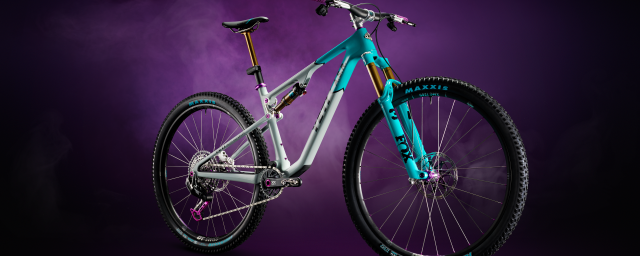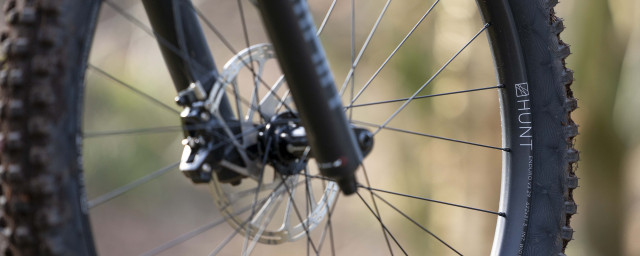Discovering Rwanda on an epic bikepacking tour

Words by Finley Newmark // Photos by Mike Vlietstra
Upon returning from Kenya's Migration Gravel Race (a four-day stage race around the Maasai Mara), I was keen to experience more gravel riding in East Africa. So, in the summer of 2021, I signed up for the Race Around Rwanda. This event is a 1,000km ultra-distance race, covering practically the whole perimeter of the country. In early January 2022, it was announced that the race would not go ahead due to COVID curfews, limitations on group sizes, and sporting events.
- Conquering the 1,300km Italy Divide
- Discover the world of bikepacking with Komoot
- The A-Z of bikepacking: Your complete guide
Instead, the event would be postponed to March 2022 or, for those who preferred, replaced with a bike-packing event. Alongside my friends from the 'Ride Beyond Crew', I decided to push on and enjoy seven days of bikepacking, camping, and getting to see the country at a more leisurely pace. However, this would still be a challenge as each day, Komoot expected a riding time of around six to nine hours, seven days in a row.
We arrived in Kigali a few days before starting our trip. There, we enjoyed some local rides and tested out the bikes, bags, food and – of course – the altitude, as most of the ride to come would be above 2,000m. We stayed in a lovely hotel called 'The Nest Kimi' on what felt like the quiet side of town. They were very accommodating with bikes and bike bags, even storing them for the week whilst we were away.
Kigali is a very high-energy place with a mix of pristine road conditions, lovely gardens, and tree-lined road furniture. Moto taxies, old cars and black mamba bikes flood the road with less regard to the highway code than I am accustomed to. But it works. Motorbikes weave in and out of cars, and people get where they are going with ease. On a bike, it does take some extra awareness. Still, we quickly got the hang of it all and enjoyed the thrill of feeling like we were part of a peloton between each set of traffic lights.
The first two days of our trip were some of the best. We soaked up the novelty of enthusiastic welcomes – "Hi, hi", "How are you" 'what is your name?" – shouted from the side of the road as children ran behind our bikes laughing until they ran out of breath. The conditions of both the gravel and the roads throughout Rwanda were some of the smoothest I have ridden. We did find the odd technical off-road sections, but, in general, we maintained a high speed and kept up momentum much the same as on old tarmac back home in the UK.
Bikepacking Rwanda
Day 1: On the first day of bikepacking, we travelled southwest to a town called Rwabuye, where we pitched up our tents in the garden of a hotel. Some riders stayed in the hotel, which is a great option for larger groups or those who do not want to carry tents around. Camping was easy when in the right place, but I wouldn't recommend camping just anywhere. In warm climates like East Africa, the communities use all outdoor space, so finding an appropriate place to set up camp without intruding or getting in the way can be difficult.
Day 2: We covered 157km of road and gravel with 3,100m of climbing. The long uphill stretch in the morning made it feel like a very slow start. After a visit to the Genocide Memorial Museum, followed by a series of punctures and a broken chain, we rode the last gravel descent in the dark. However, I would still highly recommend taking some time to learn about Rwanda's history as this gave context to the country's beauty and culture.
Between nine hours of riding a day, you need to find good spots to refuel and rehydrate. Temperatures on this trip reached 30-degrees, so finding refreshments was a priority at certain points. Shops were initially hard to spot; as to us, they looked just like every other village house or hut, though after the first day of riding, we got the hang of how to find places for food and water. Each time we stopped, we attracted attention from the locals. Big crowds of children would gather to watch us eat lunch and chat about where we had come from and where we were going.
Days 3 & 4: On our third and fourth days, we had terrible weather. The rainy season starts around March time, but Rwanda is still prone to heavy downpours most of the year. On these days, we had alternative routes planned to ensure we didn't come across anywhere too muddy for our laden bikes. We travelled north, following Lake Kivu that borders the Congo, and at one point came within a few kilometres of the border before heading back inland to our accommodation. At this point, we could go from overheating at 30-degrees to being cold, wet and dirty within the space of five minutes. We enjoyed these days all the same, as they brought a different angle to our experience. With the rain came greener greens and beautiful moody views.
Days 5 & 6: For me, days five and six were highlights. The temperature had dropped to something comparable to a balmy British summer, and the dust had been tamed by the rain. We cycled north towards Uganda, passing Lake Burera, where we were met with some of the best views of the whole seven days. There were more accommodation and camping opportunities near Lake Muhazi, with places made for tourists to lodge in the area. There was definitely a sense of security in being so close to Kigali as, by then, our bikes were beginning to make some unusual noises!
Day 7: We finished the trip very satisfied with the distance we had covered over a mix of road and gravel. We were also culturally fulfilled with all we had experienced. I feel all the more prepared to take on the Race Around Rwanda race in the future, and I look forward to returning.
If you are interested in the full Komoot collection from Rwanda, follow this link to Komoot's website or check out the details below.
Don't forget, you can follow Finley's adventures via his social media as he embarks on some truly incredible adventure bike rides all over the world.













